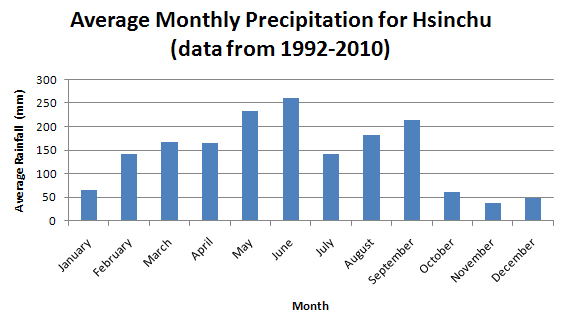Taiwan’s mountains are huge! Seeing the peaks poke through the clouds flying in and out of Taipei gives you a little taste of their size, but even more impressive is their highest mountain pass. The highest mountain in Taiwan is Yushan (玉山) at 3952 m, and the highest mountain pass crosses Hehuanshan (合歡山) at 3275 m. In contrast, while Mt. Logan, the highest mountain in Canada, tops out at 5959 m, the highest mountain pass (Highwood) is at a measly 2206 m.
Mike and I enjoy a good hike up a mountain, and tackle them whenever we can. Sadly, we were too early in the season to attempt Mt. Fuji, but we did summit Hallasan on Jeju Island, South Korea. Check out the graphic to compare some of the peaks we’ve summited, and the highest peaks in Canada and Taiwan.

As part of our time resting and exploring Hualien, we rented scooters and drove up to Wuling and the Hehuashan pass. The drive from Hualien to the top is about 100 km of engaging driving and stunning scenery. The marble canyons and gushing river at the foot of the mountains give way to precarious and seemingly never ending winding roads and tunnels further up. Finally, the forest gives way, and scrub takes over. The last 10 km of driving or so looks like it could be Wales or somewhere in Newfoundland. It is interesting to note that despite the altitude, the peaks are not perennially snow-capped. Still, anyone curious about the white fluffy stuff can visit in the winter months and hope for a heavy snow fall.
At such a high elevation, the reduced amount of oxygen in the air noticeably affects the performance of your scooter. So much so that you nearly have to push it up some of the inclines! I didn’t notice the effects on my breathing while I was driving, but I felt light headed and winded the moment I parked and started walking. At the mountain top resorts, there were plenty of signs indicating medication for acute altitude sickness was available, and I can see why. Altitude effects are quite common over 3000 m, and Mike felt it too. I still can’t believe Mike cycled to the summit the very next day – a physical challenge even without the thin air!
Our time on Hehuanshan is the only time I have ever felt the effects of altitude, and it stands out as an amazing experience in Taiwan. I certainly have a newfound respect for mountaineers!

